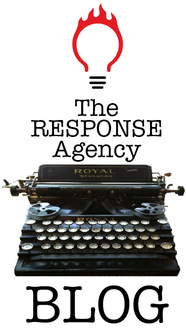From a Q&A interview with Inside Direct Mail
Inside Direct Mail: In your opinion, what is the future of direct mail? Feel free to give me a rosy or gloomy forecast. And how much of it depends on economy? Will direct mail resume its former position when (and if!) the economy restabilizes, or is this channel forever altered?
Steve Cuno: No one knows the future of direct mail, but two factors point to an opportunity. One is that, thanks to the internet, mailboxes today contain mostly advertising mail, most of which is inept. The other factor is that, unlike spam, direct mail cannot go into the trash without a recipient’s at least taking a look. For both reasons, our shop has found that well-targeted, well-executed direct mail rises to the top with greater power than ever. But note the qualifiers “well-targeted” and “well-executed.” Inept mail works no better than it ever did.
Inside Direct Mail: Direct mail is much more intertwined with other channels today. What are your predictions for the role direct mail will play for most organizations in the multichannel mix?
Steve Cuno: Sometimes direct mail is used as an auxiliary awareness medium—“part of the mix.” While that can be strategically valid, it’s important to remember that direct mail has power to do more than simply reinforce a campaign message.
Inside Direct Mail: Do you think email and social media and mobile will fade over time . . . and direct mail make a comeback of sorts? Will prospects and customers return to favoring mail over email, for example? Or will trends of declining mail continue?
Steve Cuno: Solid direct mail continues to prove its worth, so it should make a comeback. Whether it will remains to be seen.
Inside Direct Mail: What about the roles of the website and pURLs with direct mail. Do websites and landing pages need to be better synced with direct mail campaigns than ever before?
Steve Cuno: Of course we should sync direct mail with landing pages. They add a convenient response vehicle. Happily, it’s a trackable one.
Inside Direct Mail: The common consensus is that the older the audience, the more direct mail-friendly they are. Thus, Seniors and Boomers are better direct mail prospects than Gen Y and iGen, for example. Do you agree or not?
Steve Cuno: This shouldn't be an agree/disagree question. Let’s take a look at what the evidence shows. Then it becomes an accept/not-accept question.
Inside Direct Mail: How is copy and color and design, on the outer as well as inside the effort, being used differently today? In the future? For example, more usage of both sides of envelope? For 4-color envelopes?
Steve Cuno: It’s important to explore things like color, freemiums, both sides of the envelope, etc., etc. But sometimes I fear that these and other devices are used in place of strong copy. Given a strong list and compelling offer, copy is where selling takes place. Skilled use of an envelope back increases sales, not by looking cool for its own sake, but by luring more people into the copy. And that, of course, only works if the copy is powerful. The art of compelling copy must never take a back seat.
Inside Direct Mail: With the economic downturn, the green discussion seems to be somewhat muted. Will Green mail become a player again, with more green messaging and seals, for example, be present on future efforts?
Steve Cuno: Marketers should “go green” when doing so is a core value, that is, when they care about the environment for its own sake. They should not expect going green to be a general business-driver. Except, of course, when the target market happens to be ardently earth-friendly.
Inside Direct Mail: If you had to name the 3 greatest copywriting/design tips, what works now and will in the future, what would they be?
Steve Cuno: There are but two. The first is, thou shalt test. The second is like unto it: Thou shalt set aside thy personal preferences and roll out only that which succeedeth.

 RSS Feed
RSS Feed



